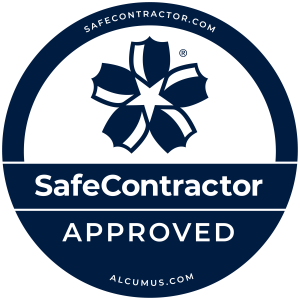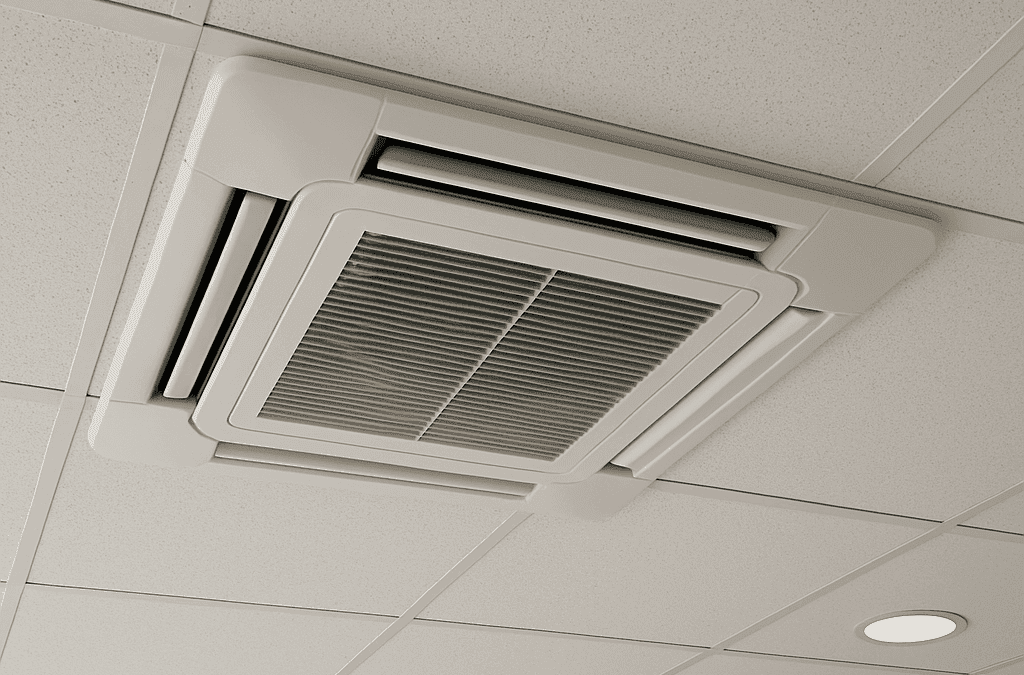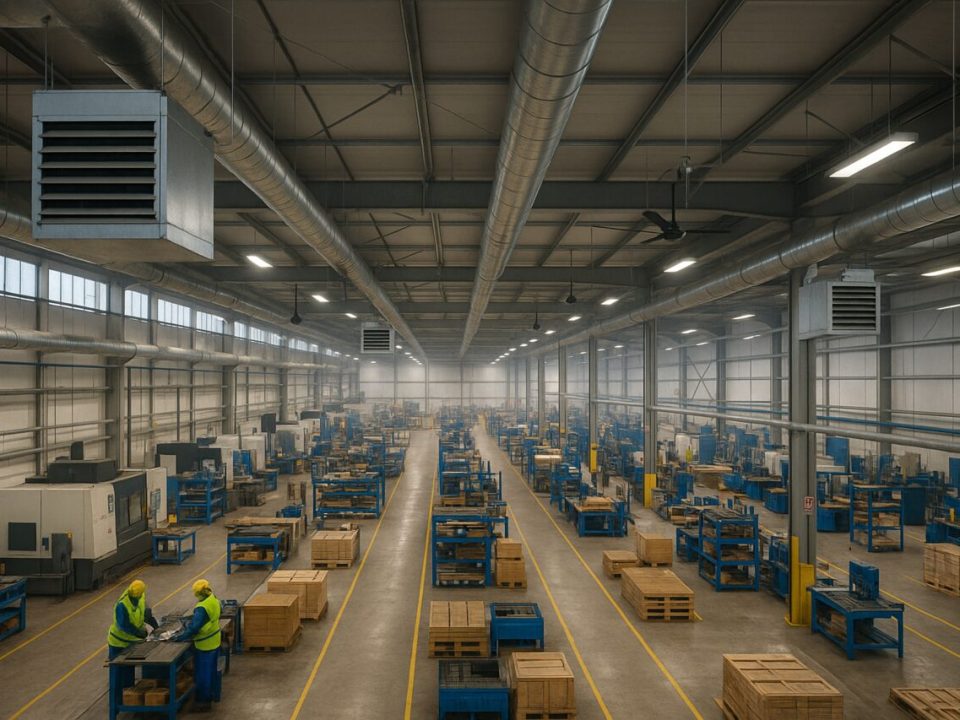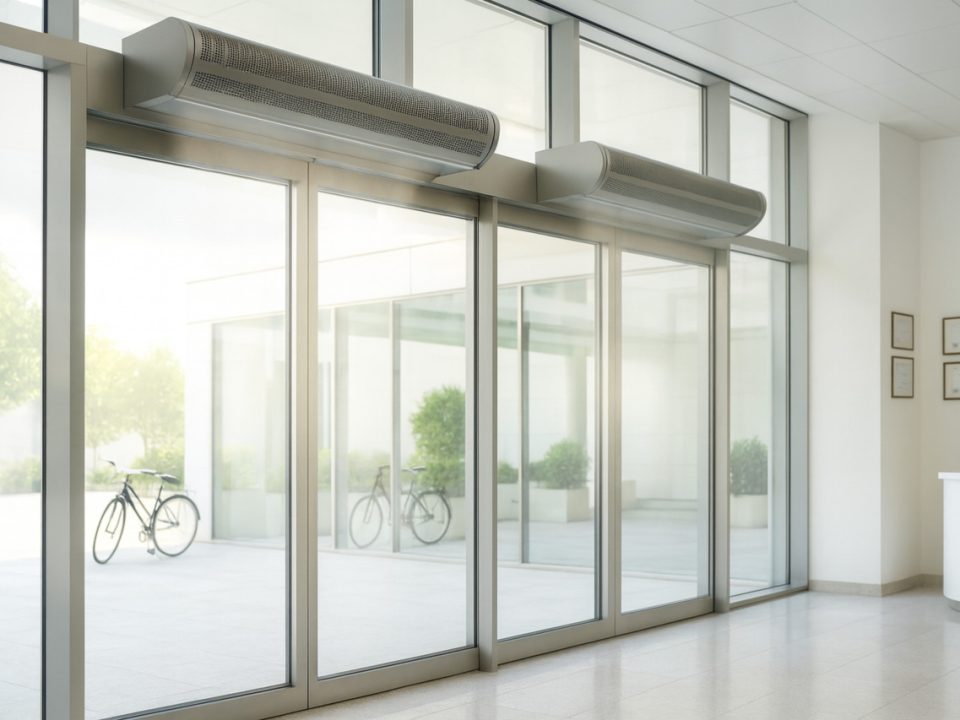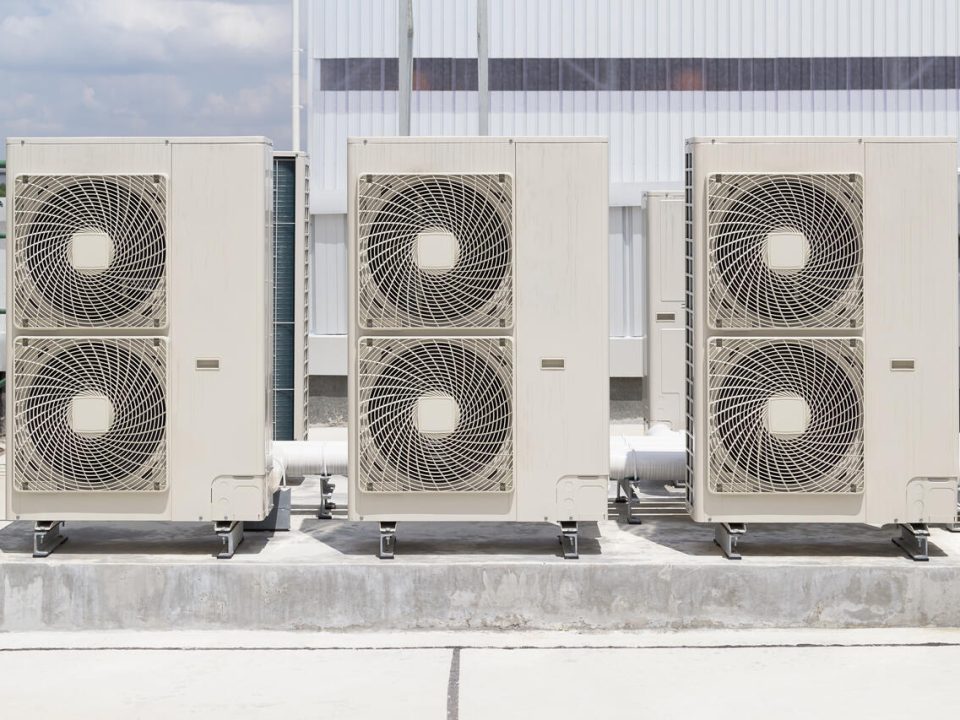
What Is a Commercial Ventilation System? A Complete Guide for UK Businesses
June 9, 2025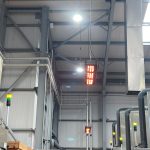
How Radiant Heating Supports Net Zero Goals for UK Manufacturers
June 15, 2025Table of Contents
Looking for a Smarter Way to Cool Your Building? Here’s What You Need to Know About Ducted Systems in the UK
When UK businesses search for ducted air conditioning, they’re usually looking for a long-term, low profile way to manage internal temperatures across entire buildings. Whether it’s for an office, warehouse, or specialist production facility, ducted systems offer efficiency, control, and a clean aesthetic. All while staying out of sight.
In this article, we explain what ducted air conditioning is, how it works, and what alternatives might be better suited depending on your space. You’ll also find direct links to Inergy Group’s air conditioning, ventilation, and cooling solutions, plus a real-life UK manufacturing case study to show it in action.
What Is Ducted Air Conditioning?
Ducted air conditioning uses a central air handling unit (typically concealed in a ceiling void or plant room) to distribute cooled or heated air through a network of hidden ducts. Air is delivered into each room or zone via vents, usually placed discreetly in ceilings or high on walls, allowing for quiet, consistent temperature control across the building.
This approach is popular in larger properties or where aesthetics and quiet performance matter. Common applications include commercial buildings, offices, healthcare environments, educational settings, and even UK workshops and warehouses where zoning and efficiency are key.
System Components
-
Outdoor Condenser Unit – Transfers heat from inside to the outside environment.
-
Indoor Air Handling Unit – Contains the evaporator coil and blower, concealed out of sight.
-
Duct Network – Distributes air throughout the building and returns used air for recooling.
-
Thermostats & Zoning Controls – Monitor and adjust temperatures in specific rooms or areas.
-
Dampers – Control airflow into different zones, enabling variable temperature control.
-
Air Filters – Trap dust and airborne particles before air is recirculated.
To understand how these components fit together in practice, visit our commercial and industrial air conditioning page.
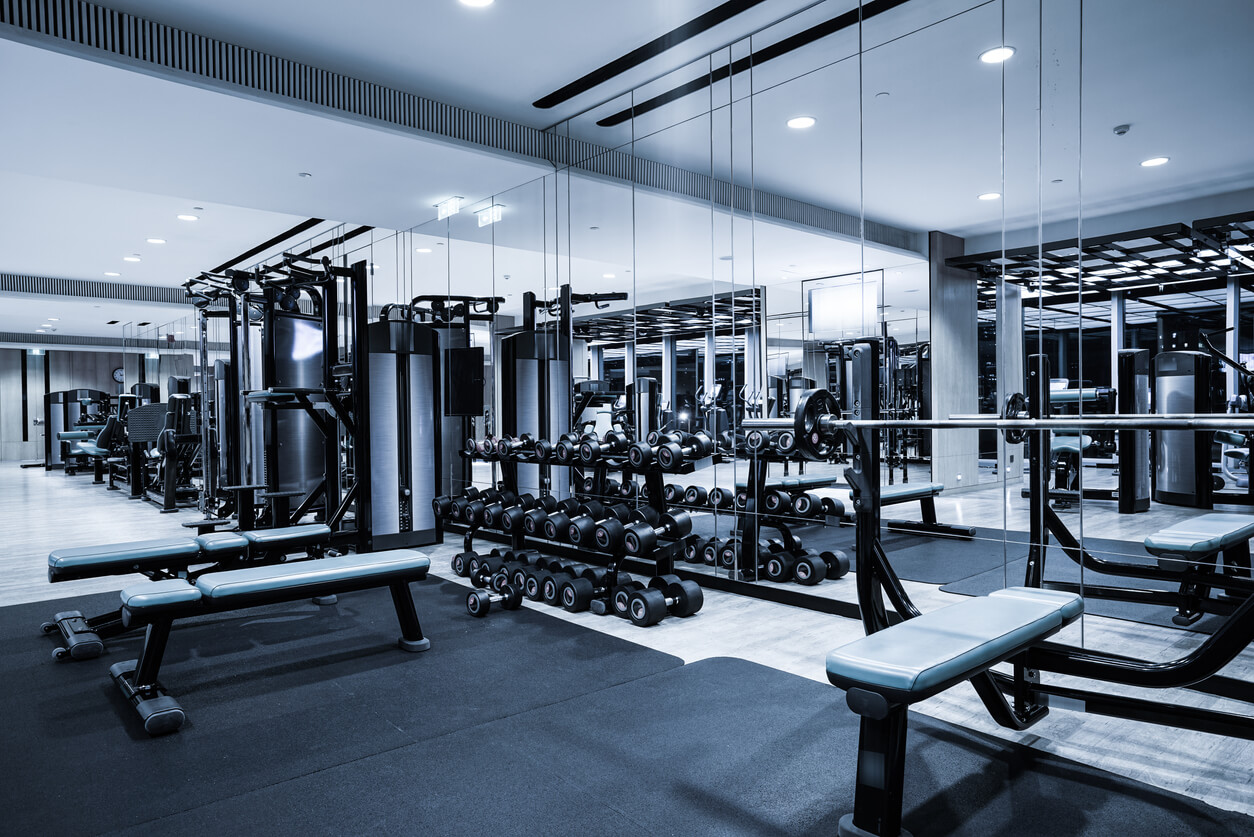
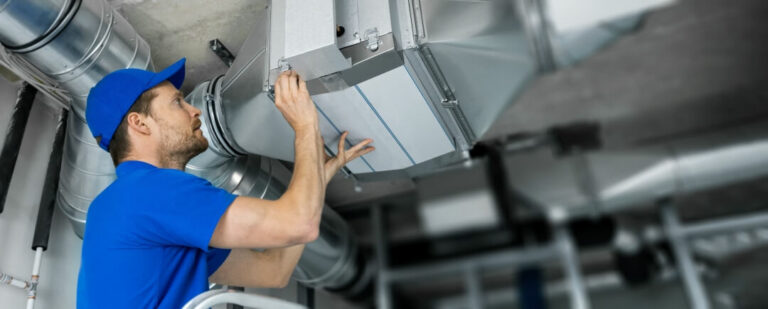
How Does It Work?
Ducted air conditioning follows a clear five-step process:
-
Temperature Monitoring – The thermostat checks the current room temperature.
-
Air Intake – Warm air is drawn through return ducts to the indoor air handler.
-
Heat Extraction – The evaporator coil cools the air by absorbing heat via refrigerant gas.
-
Heat Expulsion – The gas transfers heat to the condenser outside, where it’s released.
-
Air Distribution – Cool air is then pushed back through the ductwork to individual rooms.
This cycle runs continuously to maintain a stable internal environment, and where zoning is installed, each area receives only the amount of cooled air it needs, making it energy-efficient as well as comfortable.
Why UK Businesses Choose Ducted Systems
Ducted systems are well suited to British workplaces that need consistent comfort across multiple rooms or zones. Here’s how they compare across key decision-making factors:
| Benefit | What It Means for Your Business |
|---|---|
| Visual Simplicity | Vents are subtle and discreet – ideal for modern offices or client-facing environments |
| Flexible Zoning | Control temperatures separately in each area, improving comfort and reducing waste |
| Quiet Operation | No noisy indoor units; ideal for open-plan spaces or quiet work areas |
| Energy Efficiency | Optimised control means less wasted energy, especially when spaces are empty or used less frequently |
| Year-Round Comfort | Many systems offer both cooling and heating, supporting seasonal shifts |
For high-ceiling buildings, heritage properties, or spaces with different thermal needs by area, ducted systems can be tailored with smart controls and sensors to get the best from every room. You can explore how this works in action for workshops and warehouses.

How Does It Compare to Evaporative Cooling?
Evaporative cooling offers a more natural and lower-energy alternative, particularly well suited for semi-open or high-airflow spaces like factories, large workshops, or distribution centres.
Instead of refrigerant, it uses evaporation to cool incoming air before distributing it through ductwork. This method uses significantly less energy and is ideal for businesses looking to reduce carbon output or comply with environmental targets.
Explore our full evaporative cooling systems for details and comparisons or consider the broader picture through our sustainable cooling technologies.
Read our complete guide to commercial air con installation in the UK.
Ducted Systems and Ventilation Integration
In many cases, ducted air conditioning is installed alongside bespoke ventilation systems to meet indoor air quality requirements. This is especially important in environments with airborne contaminants, such as workshops, schools, or labs.
By controlling temperature, humidity, and air quality as one system, you improve comfort, reduce health risks, and extend the lifespan of your HVAC investment.
Thinking of Upgrading or Installing a System?
From initial consultation to full installation and long-term servicing, Inergy Group helps businesses find the best solution for their space. Whether that’s a ducted air conditioning system, evaporative units, or a hybrid setup designed around your working environment – we’ve got the in-house expertise to deliver results.
We also offer ongoing support and energy-efficient upgrades for existing systems.
Case Study
Ducted and Evaporative Cooling for UK Manufacturing Facility
A recent project shows exactly how this works in the real world. Inergy Group was appointed by a global architectural manufacturer to modernise the environment at their UK production facility. The project focused on two key spaces: a pre-treatment area and a paint plant, where poor air quality and temperature fluctuations had begun to impact performance.
Following a site survey, our team designed a bespoke solution combining ducted ventilation, targeted extraction, and evaporative cooling. In the paint lab, we installed a multi-unit cooling system with bespoke ductwork and humidity controls to deliver a stable year-round temperature.
The client later reported a 100% improvement in air quality, confirmed by independent testing. You can read the full details in our Refresh of UK Manufacturing Facility case study.
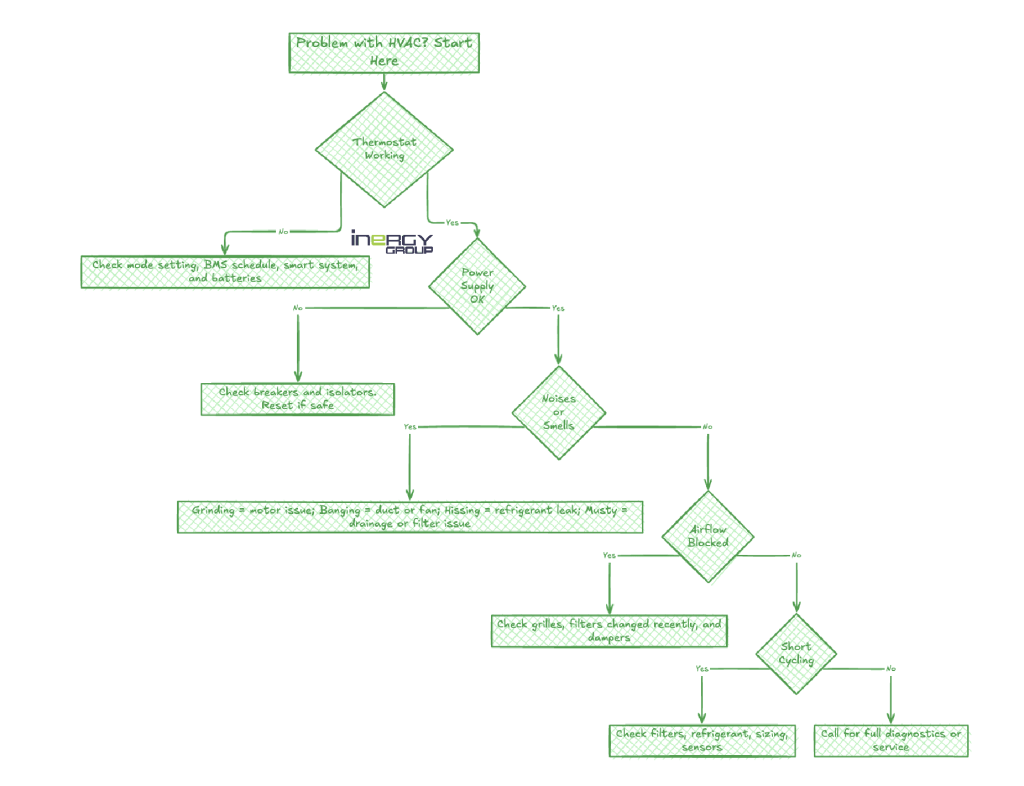
Start Your Cooling Project Today
If you’re planning a new installation or want to improve an existing system, our team is here to help. We work across the UK, supporting sectors from manufacturing and retail to healthcare and logistics.
Visit Inergy Group or contact us directly to book a site visit or speak to a member of our team.
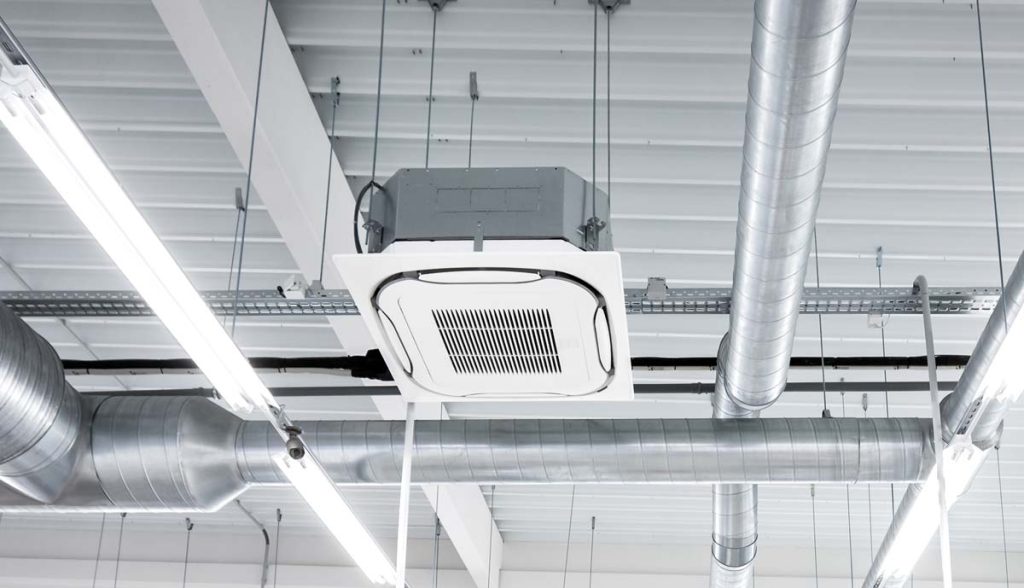
Frequently Asked Questions
What is ducted air conditioning?
Ducted air conditioning is a central system that distributes cooled or heated air through a network of ducts hidden in ceilings or walls. It’s designed to control temperature across an entire building using a single, often concealed, indoor unit and strategically placed vents.
Is ducted air conditioning better than split systems?
It depends on the building type and how the space is used. Ducted systems are ideal for large properties where consistent climate control is needed across multiple rooms, and where a discreet, quiet solution is preferred. Split systems may be more cost-effective for smaller or individual rooms.
How much does ducted air conditioning cost in the UK?
Costs vary based on the size of the building, the number of zones, and system complexity. For commercial properties, it’s best to request a site survey. Contact Inergy Group for a tailored quote and expert advice.
Can ducted systems heat as well as cool?
Yes, many ducted air conditioning systems offer both heating and cooling via a reverse-cycle function or integrated heat pumps. This makes them a year-round solution for managing temperature in offices, workshops, and retail spaces.
Is ducted air conditioning energy-efficient?
When installed with zoning and modern controls, ducted systems can be highly energy-efficient. They only deliver air to the zones in use and operate at variable speeds, reducing unnecessary energy use.
Do ducted systems improve air quality?
Yes. In addition to temperature control, ducted systems include air filters that help remove dust, allergens, and particles. When integrated with commercial ventilation systems, they contribute to healthier indoor environments.
Get in touch with us today:
📞 Phone: 01204 929999
✉️ Email: info@inergygroup.co.uk
Why Choose Inergy for Ducted Air Conditioning?
At Inergy Group, we design, install and maintain ducted air conditioning systems that work seamlessly with your building’s layout, usage patterns, and operational needs. With over two decades of commercial HVAC experience across the UK, we bring more than just technical knowledge—we bring tailored, long-term thinking.
Our clients choose us because:
-
We combine precision air handling design with real-world installation expertise
-
Our engineers are fully accredited and experienced in ducted, zoned, and integrated cooling systems
-
We offer clear, proactive project communication from initial survey to commissioning
-
Every solution is mapped to your building, with airflow, zoning, and energy use fully considered
-
We provide comprehensive maintenance and support, nationwide
Whether you’re upgrading a single site or rolling out a multi-location programme, we build systems that last and partnerships that do too. With Inergy, you gain a trusted team focused on system performance, comfort, and energy savings long after installation.
